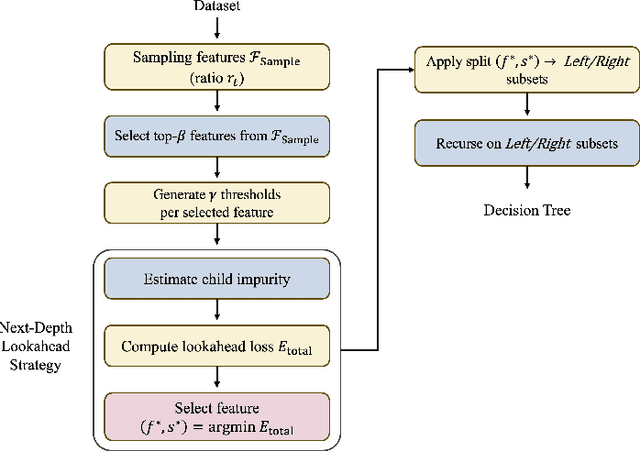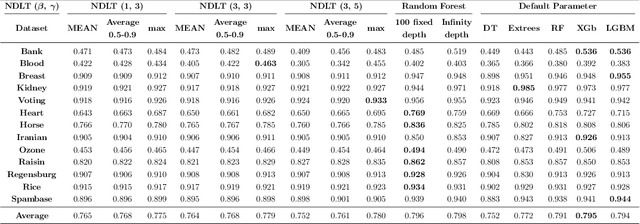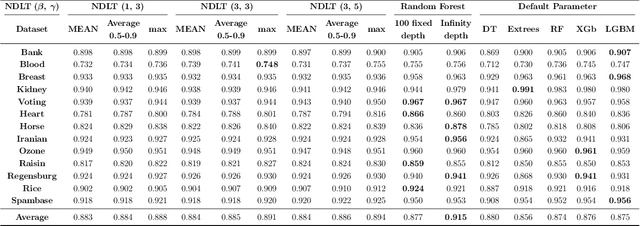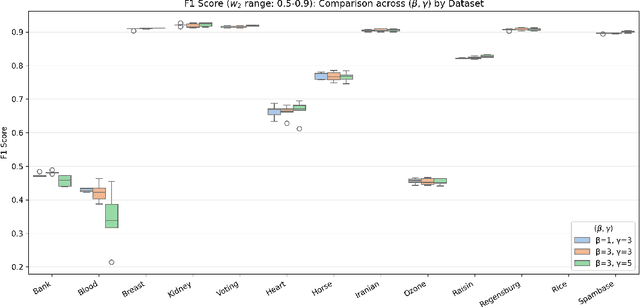Jaeho Lee
MATRIX: Mask Track Alignment for Interaction-aware Video Generation
Oct 08, 2025



Abstract:Video DiTs have advanced video generation, yet they still struggle to model multi-instance or subject-object interactions. This raises a key question: How do these models internally represent interactions? To answer this, we curate MATRIX-11K, a video dataset with interaction-aware captions and multi-instance mask tracks. Using this dataset, we conduct a systematic analysis that formalizes two perspectives of video DiTs: semantic grounding, via video-to-text attention, which evaluates whether noun and verb tokens capture instances and their relations; and semantic propagation, via video-to-video attention, which assesses whether instance bindings persist across frames. We find both effects concentrate in a small subset of interaction-dominant layers. Motivated by this, we introduce MATRIX, a simple and effective regularization that aligns attention in specific layers of video DiTs with multi-instance mask tracks from the MATRIX-11K dataset, enhancing both grounding and propagation. We further propose InterGenEval, an evaluation protocol for interaction-aware video generation. In experiments, MATRIX improves both interaction fidelity and semantic alignment while reducing drift and hallucination. Extensive ablations validate our design choices. Codes and weights will be released.
Post-training quantization of vision encoders needs prefixing registers
Oct 06, 2025Abstract:Transformer-based vision encoders -- such as CLIP -- are central to multimodal intelligence, powering applications from autonomous web agents to robotic control. Since these applications often demand real-time processing of massive visual data, reducing the inference cost of vision encoders is critical. Post-training quantization offers a practical path, but remains challenging even at 8-bit precision due to massive-scale activations (i.e., outliers). In this work, we propose $\textit{RegCache}$, a training-free algorithm to mitigate outliers in vision encoders, enabling quantization with significantly smaller accuracy drops. The proposed RegCache introduces outlier-prone yet semantically meaningless prefix tokens to the target vision encoder, which prevents other tokens from having outliers. Notably, we observe that outliers in vision encoders behave differently from those in language models, motivating two technical innovations: middle-layer prefixing and token deletion. Experiments show that our method consistently improves the accuracy of quantized models across both text-supervised and self-supervised vision encoders.
Next-Depth Lookahead Tree
Sep 18, 2025



Abstract:This paper proposes the Next-Depth Lookahead Tree (NDLT), a single-tree model designed to improve performance by evaluating node splits not only at the node being optimized but also by evaluating the quality of the next depth level.
Riemannian Optimization for LoRA on the Stiefel Manifold
Aug 25, 2025Abstract:While powerful, large language models (LLMs) present significant fine-tuning challenges due to their size. Parameter-efficient fine-tuning (PEFT) methods like LoRA provide solutions, yet suffer from critical optimizer inefficiencies; notably basis redundancy in LoRA's $B$ matrix when using AdamW, which fundamentally limits performance. We address this by optimizing the $B$ matrix on the Stiefel manifold, imposing explicit orthogonality constraints that achieve near-perfect orthogonality and full effective rank. This geometric approach dramatically enhances parameter efficiency and representational capacity. Our Stiefel optimizer consistently outperforms AdamW across benchmarks with both LoRA and DoRA, demonstrating that geometric constraints are the key to unlocking LoRA's full potential for effective LLM fine-tuning.
eMamba: Efficient Acceleration Framework for Mamba Models in Edge Computing
Aug 14, 2025Abstract:State Space Model (SSM)-based machine learning architectures have recently gained significant attention for processing sequential data. Mamba, a recent sequence-to-sequence SSM, offers competitive accuracy with superior computational efficiency compared to state-of-the-art transformer models. While this advantage makes Mamba particularly promising for resource-constrained edge devices, no hardware acceleration frameworks are currently optimized for deploying it in such environments. This paper presents eMamba, a comprehensive end-to-end hardware acceleration framework explicitly designed for deploying Mamba models on edge platforms. eMamba maximizes computational efficiency by replacing complex normalization layers with lightweight hardware-aware alternatives and approximating expensive operations, such as SiLU activation and exponentiation, considering the target applications. Then, it performs an approximation-aware neural architecture search (NAS) to tune the learnable parameters used during approximation. Evaluations with Fashion-MNIST, CIFAR-10, and MARS, an open-source human pose estimation dataset, show eMamba achieves comparable accuracy to state-of-the-art techniques using 1.63-19.9$\times$ fewer parameters. In addition, it generalizes well to large-scale natural language tasks, demonstrating stable perplexity across varying sequence lengths on the WikiText2 dataset. We also quantize and implement the entire eMamba pipeline on an AMD ZCU102 FPGA and ASIC using GlobalFoundries (GF) 22 nm technology. Experimental results show 4.95-5.62$\times$ lower latency and 2.22-9.95$\times$ higher throughput, with 4.77$\times$ smaller area, 9.84$\times$ lower power, and 48.6$\times$ lower energy consumption than baseline solutions while maintaining competitive accuracy.
Revisiting Reliability in the Reasoning-based Pose Estimation Benchmark
Jul 17, 2025Abstract:The reasoning-based pose estimation (RPE) benchmark has emerged as a widely adopted evaluation standard for pose-aware multimodal large language models (MLLMs). Despite its significance, we identified critical reproducibility and benchmark-quality issues that hinder fair and consistent quantitative evaluations. Most notably, the benchmark utilizes different image indices from those of the original 3DPW dataset, forcing researchers into tedious and error-prone manual matching processes to obtain accurate ground-truth (GT) annotations for quantitative metrics (\eg, MPJPE, PA-MPJPE). Furthermore, our analysis reveals several inherent benchmark-quality limitations, including significant image redundancy, scenario imbalance, overly simplistic poses, and ambiguous textual descriptions, collectively undermining reliable evaluations across diverse scenarios. To alleviate manual effort and enhance reproducibility, we carefully refined the GT annotations through meticulous visual matching and publicly release these refined annotations as an open-source resource, thereby promoting consistent quantitative evaluations and facilitating future advancements in human pose-aware multimodal reasoning.
The Tenth NTIRE 2025 Image Denoising Challenge Report
Apr 16, 2025



Abstract:This paper presents an overview of the NTIRE 2025 Image Denoising Challenge ({\sigma} = 50), highlighting the proposed methodologies and corresponding results. The primary objective is to develop a network architecture capable of achieving high-quality denoising performance, quantitatively evaluated using PSNR, without constraints on computational complexity or model size. The task assumes independent additive white Gaussian noise (AWGN) with a fixed noise level of 50. A total of 290 participants registered for the challenge, with 20 teams successfully submitting valid results, providing insights into the current state-of-the-art in image denoising.
ZIP: An Efficient Zeroth-order Prompt Tuning for Black-box Vision-Language Models
Apr 09, 2025



Abstract:Recent studies have introduced various approaches for prompt-tuning black-box vision-language models, referred to as black-box prompt-tuning (BBPT). While BBPT has demonstrated considerable potential, it is often found that many existing methods require an excessive number of queries (i.e., function evaluations), which poses a significant challenge in real-world scenarios where the number of allowed queries is limited. To tackle this issue, we propose Zeroth-order Intrinsic-dimensional Prompt-tuning (ZIP), a novel approach that enables efficient and robust prompt optimization in a purely black-box setting. The key idea of ZIP is to reduce the problem dimensionality and the variance of zeroth-order gradient estimates, such that the training is done fast with far less queries. We achieve this by re-parameterizing prompts in low-rank representations and designing intrinsic-dimensional clipping of estimated gradients. We evaluate ZIP on 13+ vision-language tasks in standard benchmarks and show that it achieves an average improvement of approximately 6% in few-shot accuracy and 48% in query efficiency compared to the best-performing alternative BBPT methods, establishing a new state of the art. Our ablation analysis further shows that the proposed clipping mechanism is robust and nearly optimal, without the need to manually select the clipping threshold, matching the result of expensive hyperparameter search.
Speculative End-Turn Detector for Efficient Speech Chatbot Assistant
Mar 30, 2025



Abstract:Spoken dialogue systems powered by large language models have demonstrated remarkable abilities in understanding human speech and generating appropriate spoken responses. However, these systems struggle with end-turn detection (ETD) -- the ability to distinguish between user turn completion and hesitation. This limitation often leads to premature or delayed responses, disrupting the flow of spoken conversations. In this paper, we introduce the ETD Dataset, the first public dataset for end-turn detection. The ETD dataset consists of both synthetic speech data generated with text-to-speech models and real-world speech data collected from web sources. We also propose SpeculativeETD, a novel collaborative inference framework that balances efficiency and accuracy to improve real-time ETD in resource-constrained environments. Our approach jointly employs a lightweight GRU-based model, which rapidly detects the non-speaking units in real-time on local devices, and a high-performance Wav2vec-based model running on the server to make a more challenging classification of distinguishing turn ends from mere pauses. Experiments demonstrate that the proposed SpeculativeETD significantly improves ETD accuracy while keeping the required computations low. Datasets and code will be available after the review.
Imagine to Hear: Auditory Knowledge Generation can be an Effective Assistant for Language Models
Mar 21, 2025Abstract:Language models pretrained on text-only corpora often struggle with tasks that require auditory commonsense knowledge. Previous work addresses this problem by augmenting the language model to retrieve knowledge from external audio databases. This approach has several limitations, such as the potential lack of relevant audio in databases and the high costs associated with constructing and querying the databases. To address these issues, we propose Imagine to Hear, a novel approach that dynamically generates auditory knowledge using generative models. Our framework detects multiple audio-related textual spans from the given prompt and generates corresponding auditory knowledge. We develop several mechanisms to efficiently process multiple auditory knowledge, including a CLAP-based rejection sampler and a language-audio fusion module. Our experiments show that our method achieves state-of-the-art performance on AuditoryBench without relying on external databases, highlighting the effectiveness of our generation-based approach.
 Add to Chrome
Add to Chrome Add to Firefox
Add to Firefox Add to Edge
Add to Edge